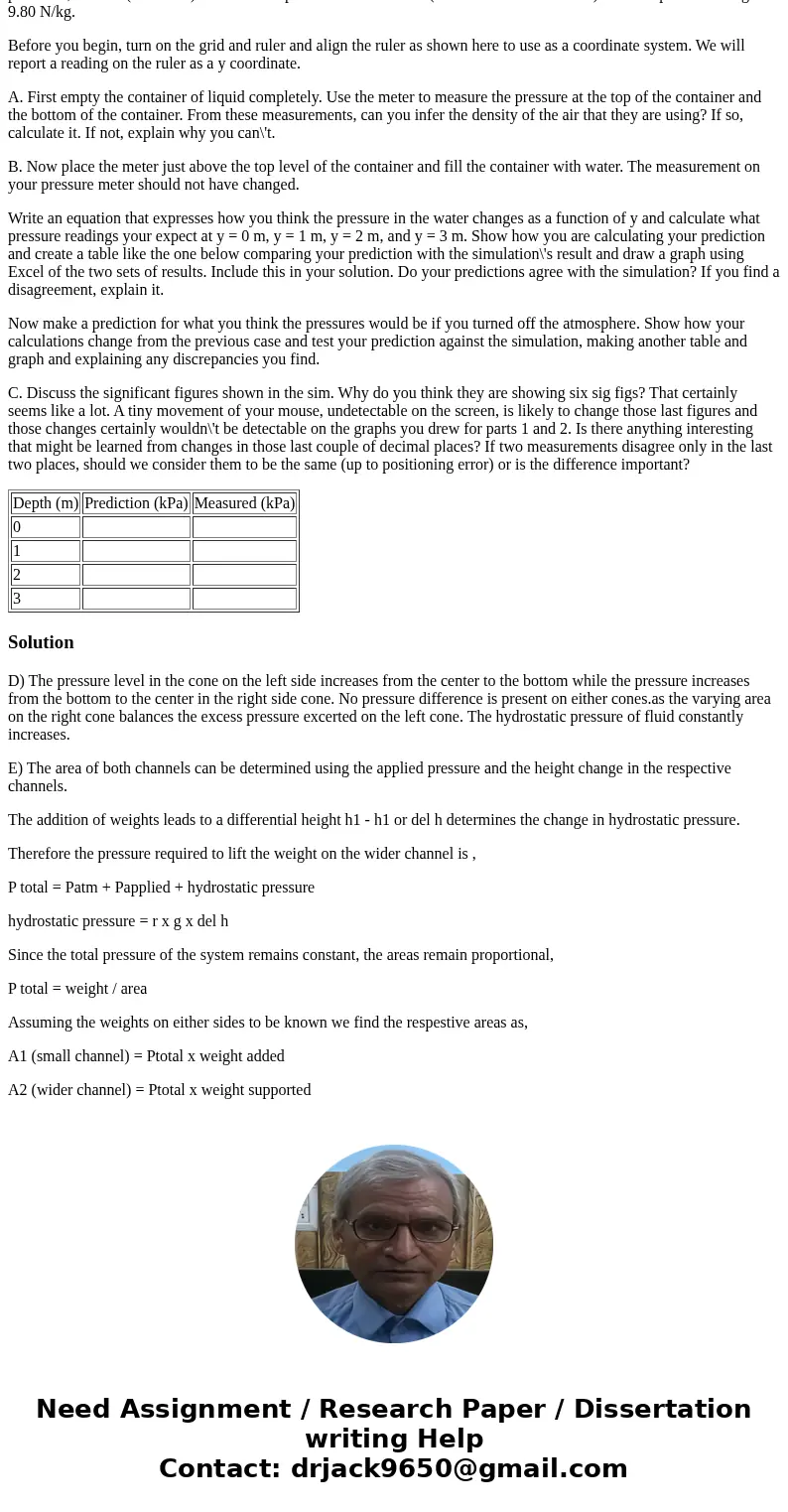Please answer D and E ONLY The University of Colorados PhET
Please answer D and E ONLY!!!
The University of Colorado\'s PhET group has a very nice simulation that allows you to explore how pressure changes in a fluid due to the effects of gravity. It\'s called Under Pressure (https://phet.colorado.edu/en/simulation/under-pressure) , and if you click the link you can either download the sim or run it in your browser. Here\'s what the user interface looks like. Although it\'s pretty obvious, we have added notation to show you some of the controls that we are going to be referring to in this problem.
This is what it looks like when you run it in the browser, have turned on the ruler and the horizontal lines, and have moved the ruler so that it measures the distance below the top of the container (which is NOT necessarily the depth of the fluid). You can measure the pressure by using your mouse to grab the meter and drag it wherever you want. Note the the measurement is made at the little needle tip at the base of the meter. Be sure that your meter is set to the SI unit of pressures, Pascals (= 1 N/m2). The meter reports its results in kPa (kiloPascals = 1000 N/m2). For this problem use g = 9.80 N/kg.
Before you begin, turn on the grid and ruler and align the ruler as shown here to use as a coordinate system. We will report a reading on the ruler as a y coordinate.
A. First empty the container of liquid completely. Use the meter to measure the pressure at the top of the container and the bottom of the container. From these measurements, can you infer the density of the air that they are using? If so, calculate it. If not, explain why you can\'t.
B. Now place the meter just above the top level of the container and fill the container with water. The measurement on your pressure meter should not have changed.
Write an equation that expresses how you think the pressure in the water changes as a function of y and calculate what pressure readings your expect at y = 0 m, y = 1 m, y = 2 m, and y = 3 m. Show how you are calculating your prediction and create a table like the one below comparing your prediction with the simulation\'s result and draw a graph using Excel of the two sets of results. Include this in your solution. Do your predictions agree with the simulation? If you find a disagreement, explain it.
Now make a prediction for what you think the pressures would be if you turned off the atmosphere. Show how your calculations change from the previous case and test your prediction against the simulation, making another table and graph and explaining any discrepancies you find.
C. Discuss the significant figures shown in the sim. Why do you think they are showing six sig figs? That certainly seems like a lot. A tiny movement of your mouse, undetectable on the screen, is likely to change those last figures and those changes certainly wouldn\'t be detectable on the graphs you drew for parts 1 and 2. Is there anything interesting that might be learned from changes in those last couple of decimal places? If two measurements disagree only in the last two places, should we consider them to be the same (up to positioning error) or is the difference important?
| Depth (m) | Prediction (kPa) | Measured (kPa) |
| 0 | ||
| 1 | ||
| 2 | ||
| 3 |
Solution
D) The pressure level in the cone on the left side increases from the center to the bottom while the pressure increases from the bottom to the center in the right side cone. No pressure difference is present on either cones.as the varying area on the right cone balances the excess pressure excerted on the left cone. The hydrostatic pressure of fluid constantly increases.
E) The area of both channels can be determined using the applied pressure and the height change in the respective channels.
The addition of weights leads to a differential height h1 - h1 or del h determines the change in hydrostatic pressure.
Therefore the pressure required to lift the weight on the wider channel is ,
P total = Patm + Papplied + hydrostatic pressure
hydrostatic pressure = r x g x del h
Since the total pressure of the system remains constant, the areas remain proportional,
P total = weight / area
Assuming the weights on either sides to be known we find the respestive areas as,
A1 (small channel) = Ptotal x weight added
A2 (wider channel) = Ptotal x weight supported


 Homework Sourse
Homework Sourse